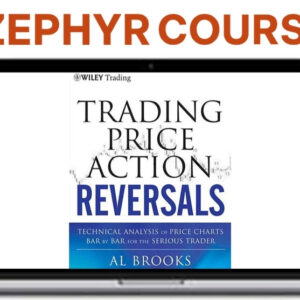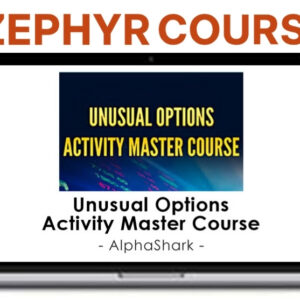Description
Key Takeaways From the Workshop
Although the workshop covered a wide range of topics, the key takeaways centered on practical strategies you can use to implement butterfly and condor options strategies effectively.
You learned that mastering trading psychology is essential—staying disciplined prevents emotional decisions that can derail your trades. By remaining objective, you’ll avoid the common pitfalls of chasing losses or letting short-term market movements dictate your actions.
Risk management also stood out as a core principle. You need to set defined risk parameters before entering trades and always adhere to them. This approach helps protect your capital and guarantees you’re not exposed to unnecessary losses.
Ultimately, combining sound trading psychology with strict risk management gives you a solid foundation for success with butterfly and condor strategies.
Practical Strategies for Butterfly and Condor Trades
Building on the importance of trading psychology and risk management, you can now focus on the practical steps for executing butterfly and condor trades.
Start by selecting underlying assets with predictable volatility for butterfly strategies; this helps you maximize profitability from limited price movement. Evaluate strike prices and expiration dates to balance risk and reward, making certain your wings are placed at ideal distances.
For condor setups, choose instruments with stable price trends and low implied volatility. Adjust your strikes to create a wide profit zone, minimizing the risk of early assignment.
Always monitor greeks—especially delta and theta—to guarantee your position aligns with your market outlook.
Real-Time Market Applications and Case Studies
When you shift from theory to real trades, seeing butterfly and condor strategies in live market conditions brings their strengths and limitations into sharp focus.
In actual trading, you quickly notice how market volatility can impact your profit zones or expose you to unexpected risks. For example, if the market suddenly becomes volatile, a well-placed iron condor might require fast adjustments or risk management tactics to avoid losses.
You’ll often need to roll positions, hedge, or close trades early to control risk. Case studies show that traders who actively monitor conditions and adapt their butterfly and condor trades can limit losses and sometimes capture profits even when the market moves unpredictably.
Using these strategies in real time teaches you discipline and the importance of structured risk management.
Frequently Asked Questions
Who Are the Primary Instructors or Presenters for the Workshop?
When you look for primary instructors or presenters, focus on their instructor backgrounds and unique teaching methods. You’ll benefit from experienced professionals who use clear, practical approaches, ensuring you understand complex topics and apply them confidently in real trading scenarios.
What Are the Prerequisites to Attend This Workshop?
To attend this workshop, you’ll need a solid foundation in options knowledge and some trading experience. You don’t have to be an expert, but you should understand basic options concepts and have experience executing trades confidently.
Is the Workshop Suitable for Complete Beginners in Options Trading?
If you’re a complete beginner in options trading, you’ll want a workshop that covers beginner strategies and options fundamentals. Make sure you understand basic concepts first—otherwise, you might struggle to keep up with more advanced material.
How Do I Access the Workshop Materials After the Event?
After the event, you’ll receive workshop access through a dedicated portal or email instructions. To handle material retrieval, just log in with your credentials, and you’ll find all the workshop content available for you to review anytime.
Are There Any Continuing Education Credits Offered for Participation?
If you’re wondering about continuing education credits eligibility, you’ll want to check the event’s details or contact the organizers directly. Not all workshops offer continuing education, so it’s important to confirm credit eligibility before participating.













 Brian Mark & Cole DaSilva – Change Lives Academy
Brian Mark & Cole DaSilva – Change Lives Academy  Alan Weiss – Sealing the Deal (London + Miami)
Alan Weiss – Sealing the Deal (London + Miami)  Axia Futures – Central Bank Trading Strategies
Axia Futures – Central Bank Trading Strategies  Al Brooks – Trading Price Action Reversals
Al Brooks – Trading Price Action Reversals  Bob Diamond – The Overages Blueprint 2019
Bob Diamond – The Overages Blueprint 2019  Axia Futures – Online Career Programme (London)
Axia Futures – Online Career Programme (London)  Arlin Moore – Tribe Accelerator
Arlin Moore – Tribe Accelerator  Austin Belcak – The Dream Job System
Austin Belcak – The Dream Job System  Brian Anderson – Recovery Profit System
Brian Anderson – Recovery Profit System  Barry Georgiou – 90-Day Profitable Publisher
Barry Georgiou – 90-Day Profitable Publisher  Ali Abdaal – Part-Time Creatorpreneur
Ali Abdaal – Part-Time Creatorpreneur  Black Rabbit – Into the Abbys
Black Rabbit – Into the Abbys  Ben Adkins – New Client Seduction Pages
Ben Adkins – New Client Seduction Pages  Barry Plaskow & Mayer Reich – Power AI Domination (Paid)
Barry Plaskow & Mayer Reich – Power AI Domination (Paid)  Andrew Aziz – Peak Capital Trading Bootcamp
Andrew Aziz – Peak Capital Trading Bootcamp  Ajit Nawalkha – Coaching Business Bootcamp
Ajit Nawalkha – Coaching Business Bootcamp  Bastiaan Slot – Appointment Setter
Bastiaan Slot – Appointment Setter  lex Feinberg – Alex Feinberg Masterclass
lex Feinberg – Alex Feinberg Masterclass  Adam Enfroy – Blog Growth Engine Mastermind
Adam Enfroy – Blog Growth Engine Mastermind  Blake Young – Market Profile Monkey Bars Class
Blake Young – Market Profile Monkey Bars Class  Andrew Payne – Coaching
Andrew Payne – Coaching  Black Digital Blueprint – Full Course
Black Digital Blueprint – Full Course  Allen Maxwell & Scott Paton – Mindset for Success
Allen Maxwell & Scott Paton – Mindset for Success  AlgoHub – 2023 Full Completed
AlgoHub – 2023 Full Completed  Aidan Booth & Steve Clayton – YouTube Money Equation
Aidan Booth & Steve Clayton – YouTube Money Equation  Barry Robinson – 240 Rounds of a Million Styles Boxing Drills ($269.00)
Barry Robinson – 240 Rounds of a Million Styles Boxing Drills ($269.00)  Matthew Dicks – Anatomy of a Story
Matthew Dicks – Anatomy of a Story  Bob Serling – The Million Dollar Minute
Bob Serling – The Million Dollar Minute  AI-Content Niche Site Building Course
AI-Content Niche Site Building Course  Alen Sehovic & Greg Kononenko – Accelerated Paydays
Alen Sehovic & Greg Kononenko – Accelerated Paydays  Alek Sheffield – The Six-Figure Storefront
Alek Sheffield – The Six-Figure Storefront  AlphaShark – Unusual Options Activity Master Course
AlphaShark – Unusual Options Activity Master Course  Agency Mavericks – The Paid Discovery Method
Agency Mavericks – The Paid Discovery Method  AI Automations by Jack 2024
AI Automations by Jack 2024  AI Blogger + 10 Minute Emails – Matt Giaro
AI Blogger + 10 Minute Emails – Matt Giaro  100K Dollars Club – Psychology of a Successful Trader
100K Dollars Club – Psychology of a Successful Trader